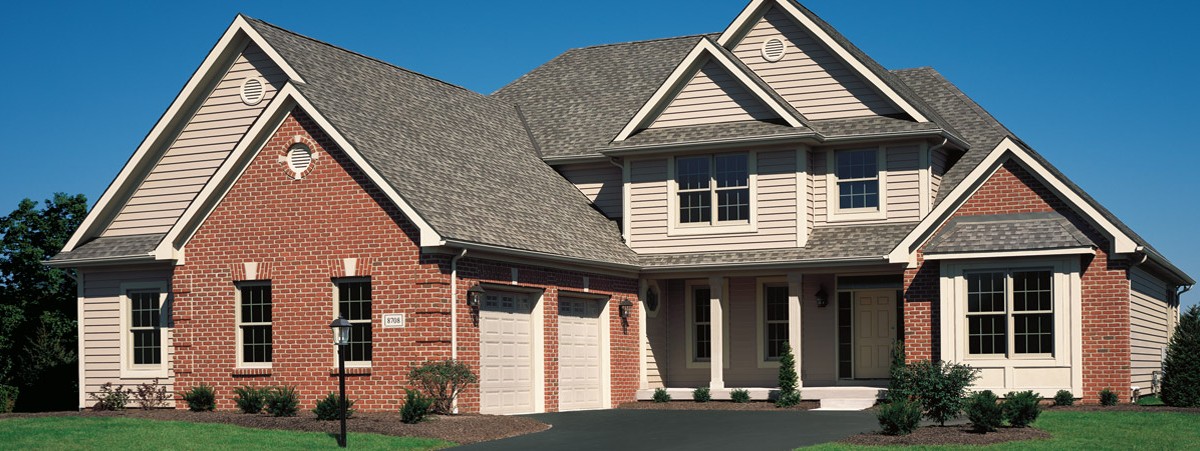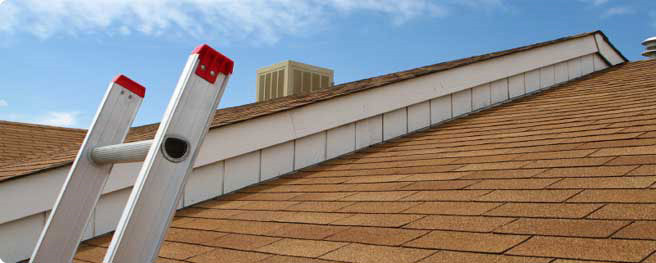Top 10 Most Common Roof Problems

Replace or Repair Your Roof?
August 22, 2014
Top Ten Roof Repairs
September 9, 2014Obvious or unforeseen, roof problems are always a pain and undoubtedly a significant expense. Buildings magazine examined which problems are most common and the conditions that can either cause or be the result of premature failure and reduced service life of low-slope roof systems. This is not a self-diagnostic guide, but rather an informative list of some of the problems most often battled by building owners and facilities professionals.
“If you look at a failure curve, most roofs are the best they’re going to be at the time they are installed. The curve is pretty flat in terms of their deterioration for the first several years, and the last 25 or 30 percent of the roof [life], the curve becomes more steep,” explains Ron Harriman, vice president, Benchmark Inc., Cedar Rapids, IA. Unfortunately, problems are inevitable as the roof ages. Without proper and routine maintenance, these minor problems can even become catastrophic.
1: Roof leaks and moisture
“With any roof – no matter what type – if you’ve got roof leaks, then you’ve got a problem,” explains Charles Praeger, executive director, Metal Building Manufacturers Association (MBMA), Cleveland. Leaks can occur for a number of reasons. Built-up roofs (BUR) might experience leaks due to flashing details that weren’t fastened properly during installation. “The problems an owner is typically going to have [with a BUR system] is that 95 percent of leaks occur at flashing details – anywhere the membrane itself is terminated or interrupted,” explains Helene Hardy Pierce, director of contractor services, GAF Materials Corp., Wayne, NJ. Additionally, hot bituminous and torch-applied modified bitumen roofs may experience leaks when a proper moisture barrier is not installed underneath a coping cap on parapet walls, according to Avoiding Common Roof Installation Mistakes, a CD-Rom produced by the Center for the Advancement of Roofing Excellence (C.A.R.E. Ltd.).
The C.A.R.E. CD-Rom also pinpoints improper installation of flashing as a source of leaks on torch-applied modified bitumen roofs. Inadequate head laps and backwater laps are another mod bit installation problem that can allow moisture infiltration. “Water can get under the membrane if the field of roof is installed so that water flows against the lap. The consequences of backwater laps are leaks and blisters, which can lead to roof failure,” C.A.R.E. explains. With cold-applied modified bitumens, improper storage of materials can result in moisture infiltration built into the roofing system, and under-application of adhesive can result in poor lamination and roof leaks.
Leaks can result when single-ply membrane roofs are installed with poor seams. “You’ve got to have good seams with single-ply, because if you don’t, you don’t have much. The membranes themselves will hold water. You’ve got to have the seams either glued or heat-welded properly,” Harriman explains.
2: Blow-offs, tenting, reduced wind uplift resistance, and billowing
Leaks are not the only problem that can result from improperly installed flashing. Hot bituminous roofs where flashing is poorly attached may experience open seams and laps and ultimately cause blow-offs, reduced puncture resistance, and code issues, advises C.A.R.E. Poor gravel embedment and the use of an inadequate number of fasteners in the base sheet during application of both hot bituminous and torch-applied mod bit roof systems can also have similar consequences.
Wind uplift resistance can be reduced greatly if seams are not cured adequately on cold-applied mod bit systems. C.A.R.E. notes, “Seams made with cold adhesives do not have good integrity until the adhesive has cured. If the seams are exposed to wind and rain before they are properly cured, moisture can infiltrate the roof system or wind uplift can damage the roof membrane.”
If not adhered properly to the substrate, single-ply roofs are at risk for blow-off and billowing. “With single-ply membranes, we do a little more to hold things in place, and if it’s not done properly, then we end up with tenting of the flashings [and] we end up damaging the membrane,” says Pierce.
3: Poor installation and unsatisfactory workmanship
A faulty installation dramatically increases the likelihood of problems and reduces a roof system’s life expectancy. “Workmanship does tend to be one of the more common problems or common reasons for problems that crop up at some point in the life of the roof,” Harriman comments. BUR system installation can be problematic if specific preparations are not taken. According to Harriman, problems with adhesion can result when the area isn’t cleaned, dried, and primed properly prior to installation. “Those are things that are difficult to walk up on a roof and visually see, but could lead to future problems, premature aging, or premature failure,” he says.
Torch-applied mod bit system performance can be compromised if crews do not relax the sheets prior to installation. Material preparation is important to a quality installation. C.A.R.E. notes, “Sheets installed that have not relaxed or are installed when ambient conditions such as temperature are not right can result in wrinkles, leaks, fish mouths, contraction of sheets, or blisters.” Be sure that the contractor and crew you’ve hired are educated in proper installation techniques specific to the roof they are installing.
4: Lack of maintenance
There are many reasons not to neglect the roof – including financial and business continuity reasons. Being wise to problems can prevent their escalation. “The problem in roofing is a lack of education on all levels. But if the owner of the property is better educated, the whole industry does better and less problems [occur],” explains Chris Mooney, GAFMC/C.A.R.E. national training manager, C.A.R.E., Wayne, NJ. Specific levels of maintenance are required to prevent voiding the warranty. “Perform routine inspections. You don’t have to know a lot about roofing,” Pierce explains. “Things like ponding water, a piece of slipped base flashing, pitch pockets that haven’t been filled – those should be obvious whether you know a lot about roofing or not.” Addressing minor problems before they escalate maximizes roof life as well as minimizes headaches and expense.
5: Ponding water
“Another common problem across all roof types is what I call ‘incidental ponding water.’ If we move the water off the roof, the roof has a really good chance of performing the way it should,” notes Pierce. During the design of a dead-level roof, slope should be added with tapered insulation or crickets. “If we don’t take proactive measures when we’re actually designing the roof, then we’re building in ponding water,” she stresses.
UV rays compounded by ponding water can have adverse effects on BUR and asphalt-based mod bit roofs. During installation of hot bituminous systems, C.A.R.E. warns that improper mopping can produce voids in the membrane, block drains, and result in ponding water as well as void the warranty.
Pierce cautions that before roof repairs are hastily made, the source of the ponding water should be investigated. HVAC units without condensate drain lines could be the culprit. Always inspect thoroughly before making a repair. Check drains to make sure they are free of dirt, silt, and debris.
6: Punctures and the addition of penetrations post-installation
For all owners, but especially those with single-ply or spray polyurethane foam (SPF) roof systems, damage from foot traffic can be problematic. “Punctures are something on high-traffic areas that can be a problem,” says Harriman of single-ply systems. “One of the things we like to do is add walkway paths or extra sacrificial layers of membrane.”
C.A.R.E. notes abuse of the finished roof as one of the nine most common problems plaguing single-ply systems, stating, “Heavy construction traffic can cause scrapes/cuts in the membrane and damage to the underlying substrate. In addition to leaks, this can cause premature problems with the roof membrane and may void the guarantee.” Limit traffic and conduct cursory inspections after tradespeople have been on the roof.
All roof systems’ performance is compromised when new equipment and penetrations are added to an existing roof, unless proper precautions are taken. When penetrations are added and deleted from a metal roof, the results can be disastrous. “You are sometimes left with a compromise and a lot of caulking and sealants. Metal roofs move a lot. There is a lot of expansion and contraction, and if you are left to deal with caulking, you’re probably going to have problems eventually,” Harriman warns.
7: Safety
The installation of hot bituminous and torch-applied mod bit systems requires strict adherence to safety procedures. Overheating asphalt can result in burns, and fires in the kettle and on the roof, C.A.R.E. warns. In torch-applied mod bit applications, fire extinguishers should be present and MRCA CERTA program guidelines should be followed.
During installation, odors from cold-applied mod bit systems can cause discomfort and alleged illness among building occupants. Outside air intakes should be covered in roofing areas, recommends C.A.R.E.
8: Improper repairs
Using materials that are not intended for application on specific roof types can result in permanent damage to the roof. “One of the most common problems we see with metal roofs is improper repair. People go up with caulking and plastic roof cement and improper materials that are in no way intended for that purpose,” Harriman says. “You can make a small problem worse through that improper repair.”
Pierce agrees. However, this problem isn’t exclusive to metal roofs. “On a built-up or modified roof, that five-gallon bucket of plastic cement can solve a lot of problems. But if I take that five-gallon bucket of plastic cement up on a single-ply membrane, I may actually damage the membrane itself,” she says. Follow the manufacturer’s instructions for proper use and take note of repair products with a shelf life.
9: Shrinkage
Single-ply roof types are each unique. “If you walk out onto an EPDM roof today, one of the first things you’re going to look for is evidence of shrinkage,” Harriman notes. “The two most common things I see, especially on ballasted membranes, are pulling of the flashings (which is due to shrinkage of the field membrane) or you could have deterioration – surface crazing and cracking of uncured membrane, commonly used at perimeter and penetration flashing
10: Blistering
Blistering, ridging, splitting, and surface erosion are symptomatic with BUR, and can eventually lead to bigger problems. While blisters are not always worth fixing, one of significant size should be addressed. According to C.A.R.E., inadequate attachment of hot bituminous roof systems due to asphalt heated to an improper temperature can cause blistering, along with the slipping of felts, and accelerated aging. Bad interply integrity and dry laps can also result in the appearance of blisters.
Voids and holidays can be problematic in the application of torch-applied modified bitumens. “If the membrane is not torched properly, it will result in delamination, slippage, and blisters,” the C.A.R.E. CD-Rom reports. Moisture and air trapped in modified bitumen roofs can vaporize, causing a blister. “Many times it’s non-threatening, unless it’s affecting the lap area and then it probably needs to be repaired,” says Harriman.
With cold-applied mod bit systems, the entire membrane should be installed in the same application (i.e., scheduled around work breaks and/or holidays). C.A.R.E. pinpoints the consequences of improper sequencing of work as contamination and poor adhesion between the cap sheet and base ply: ultimately, blisters, delamination, leaks, and voids.
During the installation of spray polyurethane foam systems, recovering over a wet substrate can result in severe blistering and delamination, notes Harriman.
Ensuring a quality installation, providing the roof with consistent maintenance, and the early detection of problems through routine inspections can help maximize roof life. As the roof ages, the likelihood of problems increases. However, it is how these problems are addressed that will determine the fate and future of your roof system.

